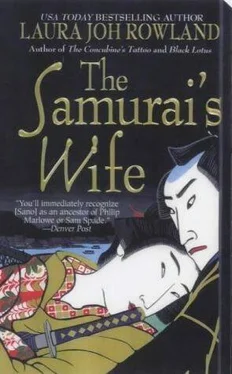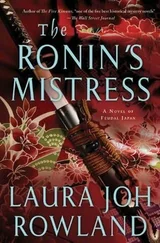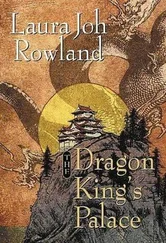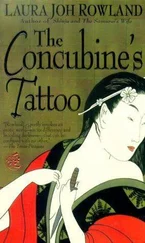“Has there been any change in the status of affairs concerning Left Minister Konoe’s death since your envoy delivered the news to Edo?” Sano asked the shoshidai.
“No, I’m afraid the mystery remains.”
At least the case hadn’t resolved itself already, Reiko thought gratefully.
“Then I should appreciate Yoriki Hoshina’s assistance while investigating the matter,” Sano said, and Reiko knew he’d guessed which local official would be most able to provide the help he needed.
“Of course, of course.” Shoshidai Matsudaira bobbed his head, obviously glad that he wouldn’t have to do anything himself. “And I shall host a banquet in your honor tomorrow night.” Then, without moving, he faded into the background.
Yoriki Hoshina said, “Ordinarily, we would house an envoy from Edo in Nijō Castle.” This was the bakufu’s stronghold in Miyako. “But I regret to say that the castle is undergoing major repairs at the moment. Therefore, the best accommodation we can offer is Nijō Manor, a private inn.”
“That will be fine, thank you,” Sano said.
“Would you like to settle in and rest now?” Hoshina asked.
“I’d rather start working right away,” Sano said. “Please have your troops escort my entourage to Nijō Manor, then show me the scene of Left Minister Konoe’s death.”
To Reiko’s dismay, Sano rode briskly through the Rashōmon Gate with Hoshina, Detectives Marume and Fukida, and a few guards, while she and everyone else lagged behind. She longed to accompany Sano, but she knew that for him to include his wife in his official business or pay her any attention now would seem peculiar to their hosts and undermine his authority. Cursing her uselessness, she sat trapped in her palanquin, praying that she would be able to make use of her talents later.
“Left Minister Konoe died in the Imperial Palace,” Yoriki Hoshina told Sano as they entered Miyako. “Please come this way.”
Beyond the Rashōmon Gate, another moat lined the Great Rampart, with another bridge leading into the old capital. Unlike Edo, a convoluted labyrinth, Miyako was laid out on a grid based on the ancient Chinese model of city design. A wide avenue extended as far as Sano could see. The procession moved down this, passing narrower streets set at perfect right angles, some edged by canals. Despite the buildings that occupied every plot of land, Miyako’s layout gave an impression of spaciousness. This was a city of plastered wood houses, serene in its ordered uniformity. The low gray-tiled roofs peaked and fell like stylized waves. Over shop doorways hung blue curtains; bamboo blinds protected merchandise from dust, while arcades sheltered pedestrians from the weather. Rising up on north, east, and west, the hills held the city remote from the outside world, but the feature that especially reinforced the peaceful atmosphere was the dearth of samurai.
Of all the people who crowded the streets, most were merchants, peasants, or priests. Fewer men sported the shaven crown and two swords of Sano’s class. Some were bakufu soldiers; others, accompanied by laden porters, were obviously travelers. Miyako was a civilian city whose business was commerce, religion, and hospitality. Inns, restaurants, and teahouses abounded. Sano glimpsed stores selling cloth and Buddhist prayer beads. In this place where fires, earthquakes, and floods necessitated frequent rebuilding, he saw nothing ancient and no trace of past wars.
However, his historian’s eye superimposed another scene upon the tranquil cityscape. Ruined buildings hulked. Fleeing refugees carried bundles on their backs; orphan children wailed; beggars and marauding outlaws roved. Smoke rose from temples burning in the hills. Through streets lined with rotting corpses filed the ghosts of armies that had ravaged Miyako throughout history. This dark vision echoed Sano’s troubled mood. Would he succeed at this investigation, or compound his disgrace with another failure? He thought of Reiko, who must surely be disappointed to miss a critical step of the case, but he couldn’t afford to disrupt his concentration by worrying about her now.
Abruptly, the party halted at a marketplace that crowded the avenue. Yoriki Hoshina said, “I apologize for the inconvenience. You’ve arrived on the first day of Obon.”
This was the Festival of the Dead, when people all over Japan welcomed the souls of the deceased back to the world of the living for a five-day visit. Vendors sold supplies for observing this important Buddhist holiday: incense and lotus flowers for tombs and altars, red earthenware dishes for serving the spirits of the dead during symbolic feasts, lanterns to guide the spirits home. Shoppers made way for the procession, which turned down another avenue, moving along a white plaster wall with vertical wooden beams, built on a stone foundation.
“This is the Imperial Palace,” Yoriki Hoshina said, dismounting at a gate guarded by Tokugawa sentries. “The main portal is reserved for the emperor’s use. We’ll enter here.”
Sano and his detectives dismounted. They and Hoshina entered a long passage inside the enclosure. From his study of palace maps, Sano guessed that the wall on his left hid the residence of abdicated emperors; only its trees and rooftops were visible. Opposite, fences bounded the estates of court nobles. A right turn led along another wall, through another gate, and Sano found himself transported to a time eight hundred years past.
An eerie calm lay over the Imperial Palace ’s famous Pond Garden. The lake spread like spilled quicksilver around islands, its surface overlaid with water lilies. Mandarin ducks roosted on a beach of black stones. Over beds of bright chrysanthemums, irises, and poppies, hummingbirds darted. Maple, cherry, and plum trees and bamboo stood resplendent in lush green leaf. The shrilling cicadas and tinkle of wind chimes, the scent of flowers and grass, the water and heat: all crystallized summer’s timeless essence. In the distance, drooping willows screened villas built in ancient style-raised on low stilts, connected by covered corridors. Sano saw no one except a gardener raking leaves. From within the palace walls, the hills seemed closer, giving the illusion that the surrounding city didn’t exist.
Awed to walk this sacred ground where the descendants of the Shinto gods lived, Sano trod respectfully; his men followed suit. Yoriki Hoshina marched down the gravel paths as if he belonged there: the shoshidai’s representatives had supreme authority over the palace. He led the way across a stone bridge to the pond’s largest island. There, shaded by pines, stood a tiny cottage built of rough cypress planks. Bamboo mullions latticed the window.
“This is where Left Minister Konoe was found,” Hoshina said, pointing at the foot of the cottage steps.
“How did he die?” Sano asked.
“The shoshidai wasn’t notified until the body had been prepared for the funeral, so all my knowledge comes from the report issued by the Imperial Court several days later,” Hoshina said. “That’s a violation of the law-we’re supposed to be informed immediately of all deaths in the palace. The court physician examined Konoe and said that he’d hemorrhaged almost all of his blood out his eyes, ears, nose, mouth, and anus. Apparently the internal organs had ruptured. And he was as limp as a rag because so many bones had been broken. But the doctor couldn’t determine the cause of this condition. There were no bruises or any other wounds on the body.”
Such a bizarre death couldn’t have been natural, and the delayed notification implied a cover-up, with murder the likely reason. As a possible explanation for Left Minister Konoe’s symptoms occurred to Sano, he felt a sudden apprehension. This could be a complex, dangerous case.
Читать дальше












